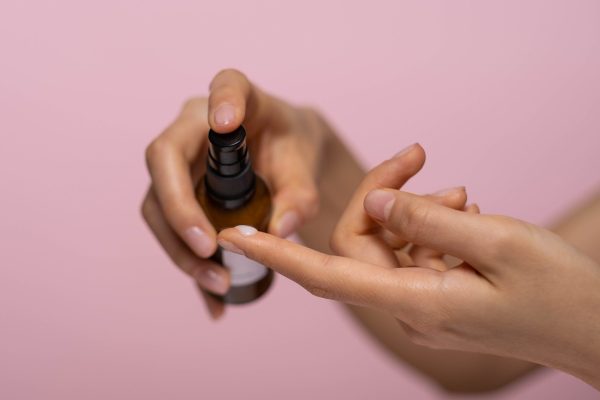When it comes to skincare, it’s easy to feel overwhelmed by the enormous amount of products and compounds currently available on the market. AHAs, BHAs, and PHAs are three of the several terms that you might already be familiar with. These three acronyms stand for a class of chemical exfoliants that have the potential to revamp your skincare routine completely. In this article, we will delve into the ABCs of skincare and learn the differences between alpha hydroxy acids (AHAs), beta hydroxy acids (BHAs), and polyhydroxy acids (PHAs). By becoming familiar with these components, you will be better able to select the most appropriate exfoliant for your particular skin type and bring out your skin’s natural glow.
AHAs (Alpha Hydroxy Acids)
AHAs, such as glycolic acid and lactic acid, are water-soluble acids derived from natural sources like fruits, milk, and sugar cane. They work by gently dissolving the upper layer of dead skin cells, revealing a fresh and brighter complexion underneath. AHAs are particularly effective for addressing concerns like uneven skin tone, fine lines, and mild acne. Their exfoliating properties also enhance the absorption of other skincare products.
AHAs (Alpha Hydroxy Acids) can be found in various skincare products, including, exfoliating toners that are designed to exfoliate and brighten the skin, or serums to target specific skin concerns. As well as chemical peels or cleansers, to provide a mild exfoliating effect during the cleansing process.
BHAs (Beta Hydroxy Acids)
BHAs, primarily salicylic acids, are oil-soluble acids that penetrate deep into the pores. They are renowned for their ability to target acne, blackheads, and excess sebum production. BHAs have anti-inflammatory properties, making them ideal for individuals with oily, acne-prone, or congested skin. By exfoliating inside the pores, BHAs help to unclog and refine them, resulting in a clearer and smoother complexion.
BHAs are included in skincare products, including, facial cleansers to provide deep cleansing and exfoliation, and spot treatments for targeting specific acne breakouts and blemishes. Also, BHAs can be found in toners or astringents specifically formulated for oily and acne-prone skin. These products can help remove excess oil, refine the appearance of pores, and prevent breakouts.

PHAs (Polyhydroxy Acids)
PHAs, such as gluconolactone and lactobionic acid, are a newer generation of chemical exfoliants. They offer similar benefits to AHAs but with a gentler approach. PHAs have larger molecules that penetrate the skin more slowly, causing less irritation and sensitivity. These acids are suitable for sensitive skin types or those who are new to chemical exfoliation. PHAs provide hydration, and antioxidant properties, and help improve skin texture and tone.
PHAs (Polyhydroxy Acids) can be found in various skincare products, including overnight masks to provide a gentle yet effective exfoliation while you sleep. These masks help to reveal smoother and more radiant skin in the morning. Also, PHAs are often included in anti-aging products such as creams, lotions, or serums, as well as eye creams to help reduce the appearance of fine lines, puffiness, and dark circles.
Choosing the Right Acid for Your Skin
Selecting the most suitable acid for your skin depends on various factors, including your skin type, concerns, and sensitivity level. Here are a few guidelines to help you make an informed decision:
- AHAs are great for normal to dry skin types and concerns like dullness, fine lines, and hyperpigmentation.
- BHAs are best for oily, acne-prone, or combination skin types struggling with acne, blackheads, and large pores.
- PHAs are a gentle option suitable for sensitive skin types or individuals who want to introduce chemical exfoliation gradually.

Incorporating Acids into Your Skincare Routine
To incorporate these acids effectively into your skincare routine, follow these tips:
- Start slowly: Begin by using the exfoliant once or twice a week, gradually increasing frequency as your skin adjusts.
- Patch test: Before applying the acid all over your face, perform a patch test on a small area of your skin to check for any adverse reactions.
- Follow instructions: Read the product instructions carefully and follow the recommended usage guidelines.
- Sun protection is crucial: Acids can increase skin sensitivity to the sun, so always wear broad-spectrum sunscreen during the day.
Final thoughts
Exfoliating compounds such as AHAs, BHAs, and PHAs are highly effective and have the potential to revolutionize your skincare routine. If you are able to differentiate between these acids, you will be in a better position to select the one that is most appropriate for your skin type and problems. Incorporating them in a strategic manner will allow you to get the benefits of having a complexion that is more smooth, clearer, and radiant. Always keep in mind that patience and persistence are the keys to success.
